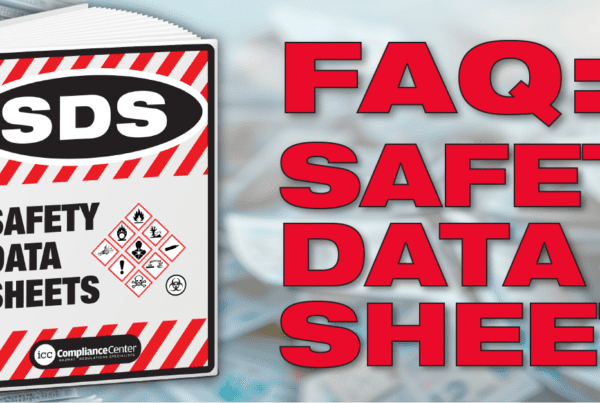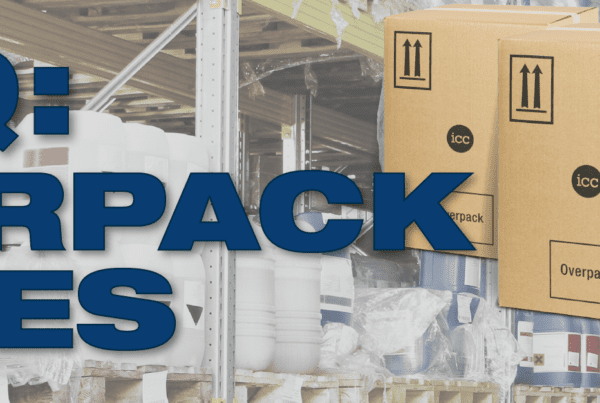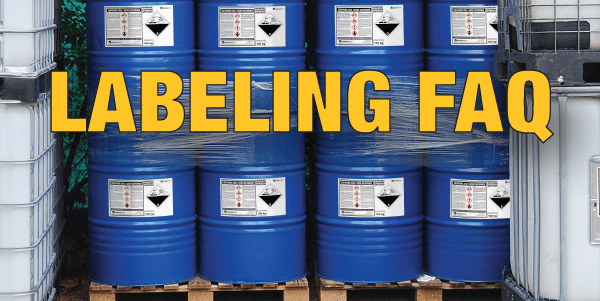Frequently asked questions regarding placards and placarding requirements.
What is a placard?
A placard is a diamond-shaped sign that identifies the class of hazardous material on large containers such as tractor-trailers, rail-cars, cargo tanks or bulk containers. In certain situations, the UN number for specific products inside the transportation container must also be shown on or beside the placard. All Placards are 10.75” x 10.75”.
Identifying hazardous materials in transport provides vital and potentially life-saving information to our Emergency Response teams in the case of accidents. Along with providing visual guidance for proper and safe handling of products during transport.
It is the shipper and the carrier’s responsibility to ensure the regulatory compliance of Hazardous Materials in transport.
Not sure what is required or what you need? Our regulatory specialists are an extension of your team. We provide regulatory training, services, and products that ensure your team transports hazardous materials safely and effectively.
How many placards do I need on my truck and where do I display the placards?
When required, placards need to be displayed so that they are visible from the front, back and both sides of a vehicle, other transport unit or bulk container. Therefore, they should be put in locations where they would not be covered or obscured by objects such as tarps or coverings during transport. On the front of a tractor trailer, the placard may be placed on the front of the tractor portion instead of the trailer, if it would be hard to see when placed on the trailer.
How do I find out what placards are appropriate?
The rules for placarding for the US can be found in 49 CFR, Part 172.500, Subpart F, in Title 49 of the Code of Federal Regulations. In Canada, the criteria can be found in Part 4, Dangerous Goods Safety Marks, in the Canadian Transportation of Dangerous Goods Regulations. Also, you can contact us here at ICC Compliance Center for advice on selecting the right placards for your shipment.
ICC has products to ensure your staff is properly trained and informed.
Hazmat Placarding Guide for Road & Rail Chart
TDG Clear Language Placarding Chart
What placard materials are available?
Screen Printed Self-Stick Vinyl – Removable
- Screen-printed
- Self adhesive
- Meets IMDG Code requirements BS5609 (5.2.2.2) for 90-day seawater immersion test
- Adheres to most surfaces
- Can be easily removed leaving little adhesive residue
- Use when removal is required
- Placard holders are NOT required
Screen Printed Self-Stick Vinyl – Permanent
- Screen printed graphics stay vibrant on durable self-stick vinyl
- Permanent High-tack acrylic adhesive – Adheres to most surfaces
- Passes IMDG BS5609 requirements for 90-day sea immersion
- Placard holders are NOT required
Screen Printed Rigid Vinyl
- Screen-printed
- Self adhesive
- Meets IMDG Code requirements BS5609 (5.2.2.2) for 90-day seawater immersion test
- Adheres to most surfaces
- Can be easily removed leaving little adhesive residue
- Use when removal is required
- Placard holders are NOT required
Tagboard
- Coated board material
- Non-adhesive
- Durable and weather and fade resistant
- Designed for short term use – 60-day outdoor life
- Economical
- Commonly used when the return of placard is unlikely
- Placard holders are required
Placard Types
- UN Number Placards – DOT 49 CFR
- UN Number Placards – TDGR
- Worded Placards DOT 49 CFR
- Non-Worded Placards TDGR & International
How many hazard classes are there and what do they represent?
- Class 1 – Explosives
- Class 2 – Gasses
- Class 3 – Flammable Liquids
- Class 4 – Flammable Solids
- Class 5 – Oxidizers
- Class 6 – Toxic Substances
- Class 7 – Radioactive
- Class 8 – Corrosive
- Class 9 – Miscellaneous
How do I display placards?
- Display placards visibly on all 4 sides of transportation container
- Front placard can be displayed on front of truck if required
- Keep placards away from other elements; doors, pipes, ladders, etc.
Placard Application Options
- Self-Stick
- Placard Holder
- Flip System
Compliance Tips
Avoid fines and shipping delays:
- Use quality placards suited for application that won’t fade or fall off
- Use regulatory compliant placards
- Attach securely and prominently
UN Number Panels & Other Markings
- Orange UN Number Panels
- Limited Quantity Marking
- Biohazard Mark
- Anhydrous Ammonia Placard
- Fumigation Warning Sign
- Marine Pollutant Marking
- Elevated Temperature Mark





